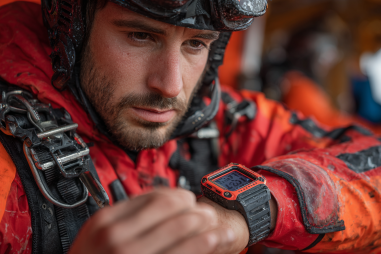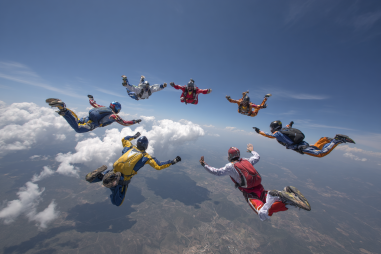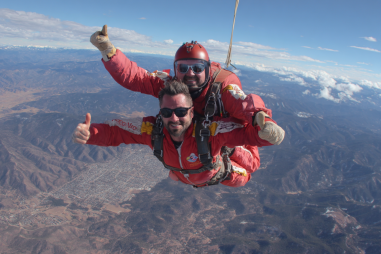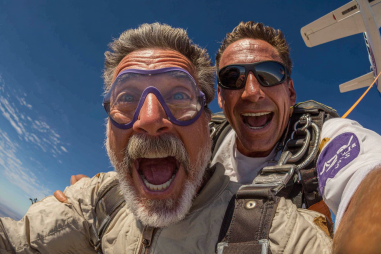Boarding the aircraft is a crucial moment in any skydiving adventure. It’s the bridge between preparation on the ground and the exciting leap from the sky. Ensuring safety during this phase is essential not only for the individual skydiver but for the entire jump team. Proper procedures minimize risks, create a smooth and efficient process, and set the tone for a successful jump. Let’s explore the important safety procedures every skydiver should follow when boarding the aircraft, making sure that from the moment you step in until you reach altitude, safety is the number one priority.
Importance of Safe Boarding Procedures
Skydiving is a high-adrenaline sport that demands respect for safety protocols at every stage. While the actual jump often receives the most attention, boarding the aircraft safely is the foundation for everything to follow. Entering the aircraft calmly and correctly helps avoid unnecessary accidents or mishaps that can happen in a cramped, moving environment full of equipment and excited individuals.
Safe boarding procedures reduce the chances of equipment damage, prevent injuries like trips or falls, and ensure that everyone’s gear is properly handled. Additionally, orderly boarding facilitates better communication between skydivers and crew, enhancing overall operational efficiency and safety. Ultimately, a well-managed boarding process contributes to a stress-free experience and increases the likelihood of a successful and enjoyable jump.
Pre-boarding Safety Checks
Before stepping onto the aircraft, skydivers must perform thorough safety checks. These checks are designed to confirm that all gear is in peak condition and that jumpers are physically and mentally ready to board. Pre-boarding inspections typically involve:
- Inspecting parachutes, harnesses, and reserve systems for any visible damage or irregularities.
- Confirming that altimeters, helmets, goggles, and other safety equipment are securely fitted and functioning properly.
- Ensuring that all accessories, such as Automatic Activation Devices (AADs), have been activated and tested.
- Reviewing weather conditions and jump plan details one last time.
Completing these checks before boarding reduces the likelihood of discovering problems mid-flight, allowing skydivers to focus on the jump without distraction or delay.
Proper Boarding Techniques for Skydivers
Boarding an aircraft for a skydive requires a different mindset and technique than a typical airplane boarding. Due to bulky gear and limited space, it’s vital to enter the aircraft in an organized and cautious manner. Here are some best practices:
- One at a time: Avoid rushing or crowding the doorway. A single-file approach minimizes jostling and the risk of tripping over equipment.
- Maintain balance: The aircraft floor can be uneven or slippery. Use handrails or staff assistance if needed to keep steady.
- Careful with gear: Large parachute rigs require extra attention to prevent snagging on doors or other skydivers’ equipment. Scan your pathway before stepping through.
- Follow crew instructions: The jump crew is experienced in managing safe boarding. Pay close attention and comply promptly with their directions.
- Stay calm and focused: Keep your movements deliberate to avoid accidental collisions or loss of balance, especially as others board behind you.
Seating Arrangements and Harness Checks
Once inside the aircraft, seating arrangements must be observed carefully for safety and efficiency. Seating order depends on the type of aircraft and jump plan, but typical practices include:
- Jumpers who will exit first are seated nearest the door.
- Loadmasters or instructors may have designated seats to assist and supervise.
- Spaces are allocated to accommodate gear bulk and allow movement when preparing to jump.
While seated, it’s essential to conduct final harness and equipment checks. This includes ensuring that the harness is snug but comfortable, all fasteners are securely locked, and parachute deployment handles are free and visible. An important step is to perform buddy checks if possible—checking each other’s gear helps catch any overlooked errors early.
Communication with Pilots and Crew
Clear and constant communication between skydivers, pilots, and crew members is fundamental to boarding safety and jump success. Before takeoff, the crew will typically provide a briefing covering necessary safety reminders, jump order, and aircraft behaviors. Skydivers should:
- Ask questions if anything about the load or procedures is unclear.
- Inform the crew of any equipment issues or medical concerns immediately.
- Listen carefully to any last-minute changes in conditions or jump altitude.
Onboard communication helps synchronize the jump process, ensuring everyone knows their roles and responsibilities. It also assures the pilot that the load is secure and that skydivers are ready for a safe takeoff and ascent.
Preparing Mentally for the Jump
Boarding the aircraft is also a crucial moment to prepare mentally. Many skydivers find this time a mix of excitement and nerves. Use these moments to focus and visualize the jump, reinforcing the training and safety protocols you’ve learned. Some tips include:
- Practice deep breathing to stay calm.
- Review jump sequence mentally, from exit to deployment.
- Stay positive and confident in your preparation and abilities.
- Engage in quiet conversations with jump partners or instructors to maintain a relaxed mindset.
Being mentally prepared helps reduce impulsive reactions and promotes calm, calculated decisions, both essential when the plane doors open and it’s time to jump.
Review of In-flight Safety Rules
Before takeoff, skydivers should remind themselves of important in-flight safety rules to ensure compliance and readiness throughout the ascent. Some key rules include:
- Remain seated when required and secure your harness properly.
- Keep your head clear of the door and any moving aircraft parts.
- Listen attentively for instructions from the pilot or jumpmaster, especially if there are any changes in the plan.
- Do not handle equipment unnecessarily during ascent unless instructed.
- Be prepared for any unexpected turbulence and follow crew guidance.
Adhering to these rules helps maintain order and safety, preventing accidents inside the aircraft and preparing jumpers for a coordinated exit.
Step Confidently into Your Skydive
Boarding the aircraft safely isn’t just about getting on board — it’s about setting the stage for a safe, enjoyable, and successful skydive. By following pre-boarding checks, practicing proper techniques, communicating effectively, and mentally preparing, you create the best possible environment for your jump. Remember that every member of the jump team shares a responsibility to uphold these safety standards. When everyone plays their part, the entire experience becomes smoother and safer — allowing you to focus on the incredible thrill of flying through the sky and making that unforgettable leap.







